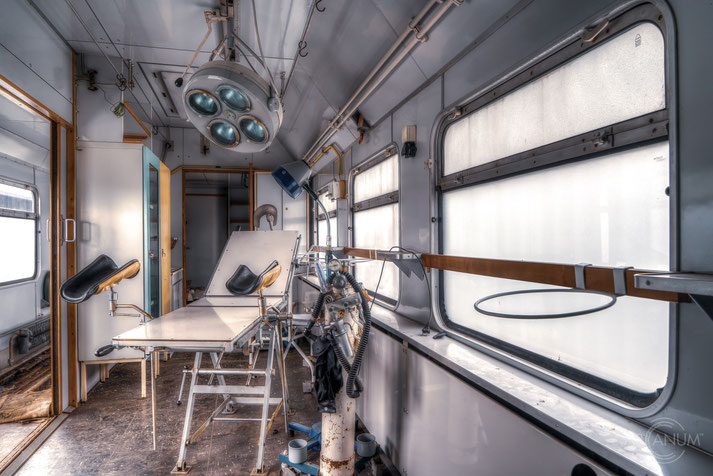The Medical Train
The K-9 "Catastrophe Train" is the core of an auxiliary train of the Deutsche Reichsbahn (the GDR's railway company), which should officially be used to help during natural disasters (hence the name) or serious accidents to care for the sick or injured. In reality, however, it was used as a mobile hospital in the GDR, especially during major military maneuvers under the Warsaw Treaty. Because of the secrecy, the wagons were not labeled with their intended use, as is customary with railway company cars. The trains were set up at prominent points all over the country.

The train consisted mainly of 5 cars: the first behind the locomotive was the machine car. This was necessary for the power supply of the entire train, a tent city or other facilities could also be supplied with energy. Inside the car there were two diesel units, each with an output of 40 kW. A workshop and accommodation for the staff were also included.
Next came the kitchen trolley, in which up to 500 meals could be prepared, with three large kettles and an electric stove. The car had various cooling devices and a dishwasher room. The kitchen car was followed by the bed car - there was space for 30 stretchers. There was also a place for the nursing staff and a toilet in this car.
The car is equipped with a patient call system and a telephone.
Next came the operating theater car, in which emergency operations could be carried out - all the necessary medical equipment was available (including a sterilization room).
At the end of the train, the second bed car ran, with space for 27 stretchers. This car also had an intensive care unit with two beds, a shower and several washing facilities.
After the DR was dissolved by DBAG, all K trains were no longer needed. Most of the wagons have already been scrapped. In 1991 three complete K-trains were donated to the Hungarian Maltese Relief Service. The trains were used in refugee camps on the border with Yugoslavia.
The train in this gallery stands on an old railyard in the German city of Staßfurt and can be visited legally by contacting the "railway society" that owns the railyard (link).
Visited: August 13, 2018 [legal visit]
Location: Staßfurt, Germany
Status: In Operation



































